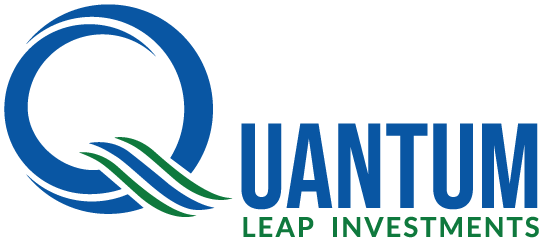MARKET UPDATE: Direct tax collection in April 1-June 17 rises 12.7%
MARKET UPDATE
Direct tax collection in April 1-June 17 rises 12.7% According to CBDT, the figures of direct tax collections for FY24 show gross collection surged to around ₹4.19 lakh crore as against ₹3.72 lakh crore during the corresponding period of FY23. Better compliance and economic recovery helped direct tax collection to surge to almost 13 per cent in the gross term during the first two and half months of current fiscal. First installment of Advance Tax collection saw a growth of 13.7 per cent. Direct Taxes comprise of Corporate Income Tax (CIT) and Personal Income Tax (PIT).
HDFC Bank and HDFC merger
Effective July 1st, 2023, HDFC merged with its subsidiary HDFC Bank and the newly formed entity HDFC Bank will emerge as the fourth-largest lender in terms of equity market capitalisation in the world. The merged shares of HDFC Limited and HDFC Bank will hold close to14 per cent weightage on the indices, surpassing the current index heavyweight, Reliance Industries with weightage of 10.4 per cent, as per PTI. HDFC Bank will become wholly owned by public shareholders, and existing HDFC shareholders will hold a 41 per cent stake in the bank. Postmerger, the key HDFC Bank subsidiaries include HDFC Securities Ltd, HDB Financial Services Ltd, HDFC Asset Management Co Ltd, HDFC ERGO General Insurance Co Ltd, HDFC Capital Advisors Ltd and HDFC Life Insurance Co Ltd.
US FOMC meet outcome
Federal Reserve Chairman Jerome Powell-led Federal Open Market Committee (FOMC) voted to pause its aggressive campaign of interest rate hikes despite “elevated” inflation, while indicating that another sharp increase could be needed before year-end. After 10 straight increases since March 2022, the Fed’s rate-setting committee voted to hold its benchmark lending rate between 5.0 per cent and 5.25 per cent, the central bank said in a statement. Holding interest rates steady gives policymakers on the FOMC time “to assess additional information and its implications for monetary policy,” the Fed said.
The US central bank began its two-day policy meeting on June 13 to set its benchmark lending rate amid cooling inflation in the world’s largest economy. The FOMC, consisting of twelve members, will announce its decision on interest rates on June 14. The Fed has raised interest rates 10 times since March 2022 as it grapples with inflation which still remains well above its long-term target of 2 per cent.
Nifty hits all-time closing high near 19200, Sensex jumps 800 points; IT, Auto stocks in focus
At market close, June 30th, benchmark Indian equity indices Nifty and Sensex hit all-time highs and settled at record closing highs. Nifty 50 surpassed over 19,200 but closed at 19,189.05 while Sensex ended trade at 64,718.56, higher by 800 points. Bank Nifty gained 0.93% to end at 44,738.25, with HDFC Bank leading the gains.
SECTOR ANALYSIS
MANUFACTURING
Factors driving interest & growth
India’s manufacturing sector is gaining momentum and presents a lucrative opportunity for investors. Due to geopolitical risks and vulnerabilities exposed during COVID, there is a global push to diversify supply chains and manufacturing rather than the great dependency of the past with China.
Coupled with this, India’s growing consumer market with a rapidly expanding middle class is creating and increasing domestic demand, the manufacturing sector will have to step up to meet these growing needs. As a result, the Government of India, is driving the manufacturing sector to contribute 25% of the GDP.
To achieve this, the Government has launched many incentives and policies to promote domestic manufacturing, attract foreign investors, and boost the growth of this sector. E.g. Atmanirbhar Bharat, Make in India, Production-Linked Incentive (PLI) etc.
It has also promoted ease of doing business in India by implementing reforms, simplifying regulations, and enhancing infrastructure. India has also gone through a digital transformation and has adopted digital technologies, automation, and Industry 4.0 practices in manufacturing processes to improve efficiency, productivity, and competitiveness. The Government has liberalized policies, created tax incentives and initiatives to attract foreign direct investments (FDIs) as well.
MANUFACTURING…
Roadmap for the future
The potential for growth of the manufacturing sector is across many industries e.g. Automative, electronics & IT hardware, pharmaceuticals and healthcare, renewable energy equipment, textile and garments, food processing and agro-based industries, infrastructure and construction materials, and defense. India’s large pool of young skilled and semi-skilled workers, also provides India a competitive advantage.
There is an incredible amount of interest by foreign companies to begin to or increase their investment in India in the manufacturing sector across multiple industries. The top 5 countries that are already either co-manufacturing or manufacturing in India are US, Japan, UAE, Germany and France. The ‘Make In India’ website, lists foreign investors by sector, should you be interested to find out more.
According to analysts, this is manufacturing decade in India. So, it shouldn’t come as a surprise, that Fund houses are also betting on domestic manufacturing sector. The Nifty India manufacturing index aims to track the performance of stocks that represent manufacturing sectors in the country.
Examples of Mutual Funds in this sector:
Below are the returns in (%)
| Fund | 1 year | 3 year | Since inception |
|---|---|---|---|
| Kothak Manufacture in India Fund | 21.95 | NA | 14.33 |
| Aditya Birla Sunlife Manufacturing Equity Fund | 19.51 | 18.49 | 11.07 |
| ICICI Prudential Manufacturing Fund | 30.09 | 30.35 | 16.51 |
As with all thematic funds, it’s key to select funds that are diversified in their offering as part of your diversified portfolio.
Please contact Kanika at +91 9810078505 to find out more on how best you can invest in the manufacturing sector

What is Asset Allocation? Why is it important in investing?
Asset allocation refers to distributing or allocating your money across multiple asset classes, such as equity, fixed income, debt, cash, and others. The primary purpose of asset allocation is to reduce the risk associated with your investment.
It is possible that all your assets may not provide you with similar returns. Some assets that provide market-linked returns may get affected by market volatility. Hence, by investing in multiple asset classes, you can reduce risk, lower the probability of losses and improve the possibility of earning better returns.
The most important determinant of an investor’s long-term investment results is the composition of assets or asset mix in the investor’s portfolio. While factors such as security and manager selection do matter, statistically speaking, their impact keeps falling as the investment horizon gets longer, leaving asset allocation as the dominant factor driving investment results. Thus, in any financial planning process, arriving at an appropriate asset allocation is the most critical decision variable. In the asset mix, there are likely to be assets which have higher rewards and higher risks such as equities along with assets which have lower rewards and lower risks such as debt funds and government bonds. In other words, over the long term, investors cannot expect equity type of returns by participating in pure debt funds (low risk-low reward) and vice versa.
An investor should balance risk tolerance to maximise future value over the investment horizon. Risk tolerance is the ability to tolerate either a more likely temporary or a less likely permanent fall in the value of the investment.
Key factors that can affect asset allocation:
Time Horizon:
Some equity funds provide high returns over the long term. However, they are high in volatility in the short term and hence they are suitable for investments with a long time horizon. If you have a shorter time horizon for investment, for goals such as buying a car, travelling, and more, you may consider investing in an asset class that allows you to withdraw money at your convenience.
Risk appetite:
All investments carry risk. Some asset classes offer lower risk than others. The lower the risk the higher is the probability that your investment is safe, and vice versa. Risk appetite refers to your capacity towards taking a risk. If you have a higher risk appetite, you may consider investing in asset classes such as equity or market-linked funds. If you have a lower risk appetite, you may consider investing in fixed-income instruments or debt funds.
Conclusion:
The right allocation of funds in the right combination of assets can help you maximise your returns and limit risk. It is also essential to understand that asset allocation may differ for each investor. Further, your asset allocation may require changes as you age or as your financial goals change.

Macro matters – India’s current account deficit narrows to 0.2% of GDP
India’s current account deficit (CAD) decreased to US $1.3 billion in Q4:FY2022-23 mainly on account of moderation in the trade deficit coupled with robust services exports, according to the RBI. Key highlights are: Goods – fall in commodity prices and neutral growth in exports narrowed trade deficits; Services – rise in net earnings from software services increased net services receipt; Primary income – Net outgoing increased due to increase in net income payments on foreign investments; Secondary income – Transfers (remittances) by Indians employed overseas softened from previous quarter (Q3:FY22-23).
REGULATORY/POLICY UPDATE
SEBI green lights investments in the name of minors through their parent/legal guardian account or joint account, but redemption proceeds have to be diverted to the minors verified bank account only.
There will be no TCS on foreign remittances of up to Rs. 7 lakh per fiscal year. In addition , transactions done through international credit cards while being overseas would not be counted as LRS transactions, thus not subject to TCS. For overseas tour packages, a TCS of 5% will be applied if amount is unto Rs. 7 lakh, if above that limit, a TCS of 20% will be levied starting October 1, 2023. However, the Finance Ministry has made clear that even though the effective date has been moved to October 1, 2023, it is mandatory for Indians and their forex dealers to declare all such transactions between April 1-Oct 1, 2023 as the limit applies for the entire 2023-2024 year.
KANIKA’S KORNER
Prime Minister Modi’s visit to the US in late June has been pegged as being monumental in establishing strategic partnerships between the two countries. His meetings with key CEO’s on this trip not only cemented business relationships but also generated commitments for investments in India. Here are some of the highlights:
GE’s aerospace arm announced a partnership with Hindustan Aeronautics Ltd to make advanced fighter jet engines for the Indian Air Force.
Semiconductor giants, Micron Technology and Applied Materials announced investments in India.
Elon Musk, after his meeting said he would setup shop in India as soon as humanly possible.
Google will open its global fintech operations in India. Amazon has committed additional $15 billion investment over the next 7 years, taking their total investment to $26 billion by 2030.
Boeing to invest $100 million to train 31,000 pilots in India in 20 years
Outside of the private sector, strategic partnership that were announced in technology, defense, energy transition, trade, space, immigration, and aviation. In addition, both India/US ended 6 WTO disputes to give a boost to bilateral trade ties.
Together these will positively impact the Indian growth and economy down the road.

